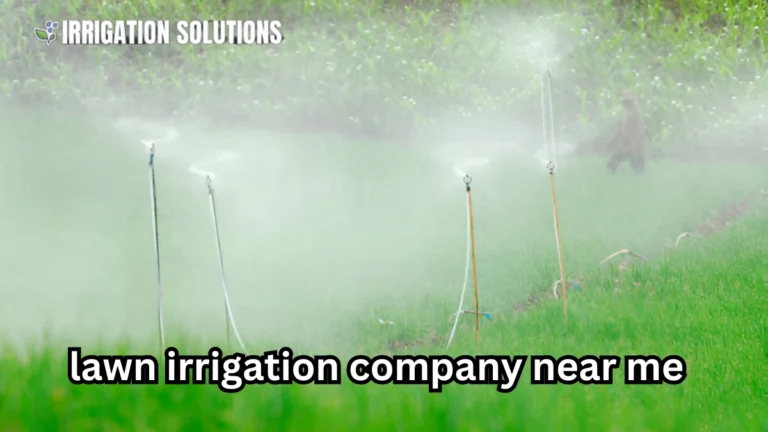best irrigation systems that conserve water

Efficient water use has become a global necessity, particularly in agriculture and landscaping. With climate change intensifying droughts and water scarcity, irrigation systems that conserve water are no longer a luxury but a requirement. This article dives into the most effective water-saving irrigation methods, their advantages, and how they contribute to sustainable practices.
Why Water Conservation in Irrigation Matters
Water is a finite resource. According to the United Nations, agriculture accounts for 70% of global freshwater usage, much of which is wasted through inefficient irrigation. Implementing water smart systems not only reduces waste but also lowers costs and improves crop yields.
The Consequences of Water Waste
- Environmental Impact: Over irrigation causes soil erosion and nutrient runoff, damaging ecosystems.
- Economic Costs: Higher water bills and resource depletion increase operational costs.
- Food Security Risks: Inefficient systems can lead to reduced agricultural productivity.
Adopting efficient irrigation systems is a practical solution to mitigate these issues while ensuring water availability for future generations.
Types of Irrigation Systems That Conserve Water
Drip Irrigation
Drip irrigation is one of the most efficient water delivery systems. It uses a network of tubes to deliver water directly to the plant’s root zone, minimizing evaporation and runoff.
Benefits:
- Reduces water usage by up to 50% compared to traditional methods.
- Improves plant health by delivering moisture directly to roots.
- Minimizes weed growth since water is localized.
Ideal For:
- Orchards
- Vineyards
- Home gardens
Case Study: In California’s almond farms, switching to drip irrigation saved millions of gallons of water annually while increasing yield by 20%.
Sprinkler Systems
Modern sprinkler systems are designed to mimic rainfall, covering larger areas efficiently.
Advanced Features:
- Smart Sensors: Automatically adjust water flow based on weather conditions.
- Low Pressure Heads: Reduce water wastage through misting.
Drawbacks:
- Higher initial costs.
- Potential evaporation losses in hot climates.
Applications:
- Lawns
- Golf courses
- Large scale crops
Subsurface Irrigation
This underground system delivers water directly to the root zone through buried tubes, ensuring maximum efficiency.
Advantages:
- Nearly eliminates evaporation and runoff.
- Reduces surface weed growth.
- Works well in windy conditions.
Challenges:
- High installation cost.
- Requires precise maintenance.
Rainwater Harvesting Integration
Combining irrigation systems with rainwater harvesting allows for the use of collected rainwater, further conserving municipal or groundwater supplies.
How It Works:
- Rainwater is collected in storage tanks.
- Filters remove debris and impurities.
- Water is fed into the irrigation system.
This approach is particularly beneficial in regions with seasonal rainfall patterns.
Key Technologies in Smart Irrigation
Soil Moisture Sensors
Soil moisture sensors monitor water levels in the soil and adjust irrigation schedules accordingly.
How They Help:
- Prevent overwatering.
- Ensure plants receive adequate hydration.
Weather Based Controllers
Weather based controllers use real time weather data to optimize watering schedules.
Features:
- Pause irrigation during rain.
- Adjust watering based on temperature and humidity.
Quote: “Smart irrigation controllers can reduce outdoor water use by 20 40%, saving homeowners hundreds of gallons annually.” U.S. Environmental Protection Agency
Automation and IoT
The Internet of Things (IoT) allows remote control of irrigation systems through smartphones or computers. Farmers can monitor and adjust watering schedules from anywhere.
Popular Tools:
- Smart irrigation apps.
- IoT enabled valves and pumps.
Practical Tips for Implementing Water Saving Irrigation
- Conduct a Water Audit: Analyze your current water usage to identify areas of improvement.
- Choose the Right System: Match the irrigation system to your soil type and crop needs.
- Regular Maintenance: Inspect for leaks, clogs, or damaged components.
- Mulching: Use organic mulch to reduce surface evaporation.
- Plant Selection: Opt for drought-resistant plants to minimize water needs.
Table: Comparison of Irrigation Systems
| System | Water Savings | Cost | Ease of Installation | Best For |
| Drip Irrigation | 50%+ | Moderate | Moderate | Orchards, Gardens |
| Sprinkler Systems | 30-40% | High | Easy to Moderate | Lawns, Golf Courses |
| Subsurface Irrigation | 60%+ | High | Complex | Large-Scale Agriculture |
| Rainwater Integration | Variable | Moderate | Easy to Complex | All Applications |
Real Life Examples of Water Saving Irrigation
Israel’s Agricultural Revolution
Israel is a leader in water efficient agriculture. By adopting drip irrigation and recycling wastewater, they transformed arid land into productive farmland.
Urban Landscaping in California
Cities like Los Angeles incentivize homeowners to install smart irrigation systems, resulting in significant reductions in municipal water demand.
Final Thoughts
Adopting irrigation systems that conserve water is more than an environmental responsibility; it’s a cost saving and productivity enhancing strategy. From drip irrigation to advanced IoT tools, these systems provide practical solutions to global water challenges. By implementing the methods and technologies discussed, you can contribute to a more sustainable and efficient use of water resources.






